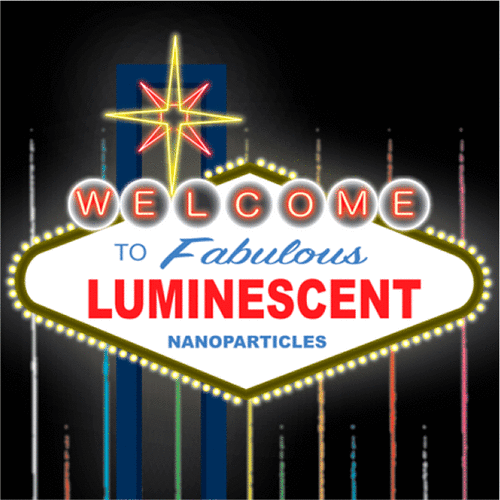当前位置:
X-MOL 学术
›
Chem. Rev.
›
论文详情
Our official English website, www.x-mol.net, welcomes your feedback! (Note: you will need to create a separate account there.)
Photoluminescent Nanoparticles for Chemical and Biological Analysis and Imaging
Chemical Reviews ( IF 62.1 ) Pub Date : 2021-07-20 , DOI: 10.1021/acs.chemrev.0c01176 W Russ Algar 1 , Melissa Massey 1 , Kelly Rees 1 , Rehan Higgins 1 , Katherine D Krause 1 , Ghinwa H Darwish 1 , William J Peveler 2 , Zhujun Xiao 1 , Hsin-Yun Tsai 1 , Rupsa Gupta 1 , Kelsi Lix 1 , Michael V Tran 1 , Hyungki Kim 1
Chemical Reviews ( IF 62.1 ) Pub Date : 2021-07-20 , DOI: 10.1021/acs.chemrev.0c01176 W Russ Algar 1 , Melissa Massey 1 , Kelly Rees 1 , Rehan Higgins 1 , Katherine D Krause 1 , Ghinwa H Darwish 1 , William J Peveler 2 , Zhujun Xiao 1 , Hsin-Yun Tsai 1 , Rupsa Gupta 1 , Kelsi Lix 1 , Michael V Tran 1 , Hyungki Kim 1
Affiliation

|
Research related to the development and application of luminescent nanoparticles (LNPs) for chemical and biological analysis and imaging is flourishing. Novel materials and new applications continue to be reported after two decades of research. This review provides a comprehensive and heuristic overview of this field. It is targeted to both newcomers and experts who are interested in a critical assessment of LNP materials, their properties, strengths and weaknesses, and prospective applications. Numerous LNP materials are cataloged by fundamental descriptions of their chemical identities and physical morphology, quantitative photoluminescence (PL) properties, PL mechanisms, and surface chemistry. These materials include various semiconductor quantum dots, carbon nanotubes, graphene derivatives, carbon dots, nanodiamonds, luminescent metal nanoclusters, lanthanide-doped upconversion nanoparticles and downshifting nanoparticles, triplet–triplet annihilation nanoparticles, persistent-luminescence nanoparticles, conjugated polymer nanoparticles and semiconducting polymer dots, multi-nanoparticle assemblies, and doped and labeled nanoparticles, including but not limited to those based on polymers and silica. As an exercise in the critical assessment of LNP properties, these materials are ranked by several application-related functional criteria. Additional sections highlight recent examples of advances in chemical and biological analysis, point-of-care diagnostics, and cellular, tissue, and in vivo imaging and theranostics. These examples are drawn from the recent literature and organized by both LNP material and the particular properties that are leveraged to an advantage. Finally, a perspective on what comes next for the field is offered.
中文翻译:

用于化学和生物分析和成像的光致发光纳米粒子
与用于化学和生物分析和成像的发光纳米粒子 (LNP) 的开发和应用相关的研究正在蓬勃发展。经过二十年的研究,新材料和新应用不断被报道。这篇评论提供了对该领域的全面和启发式的概述。它面向对 LNP 材料、其特性、优势和劣势以及未来应用进行严格评估感兴趣的新手和专家。许多 LNP 材料通过其化学特性和物理形态、定量光致发光 (PL) 特性、PL 机制和表面化学的基本描述进行分类。这些材料包括各种半导体量子点、碳纳米管、石墨烯衍生物、碳点、纳米金刚石、发光金属纳米团簇、镧系元素掺杂的上转换纳米粒子和下移纳米粒子、三重态-三重态湮没纳米粒子、持续发光纳米粒子、共轭聚合物纳米粒子和半导体聚合物点、多纳米粒子组件以及掺杂和标记的纳米粒子,包括但不限于那些基于关于聚合物和二氧化硅。作为对 LNP 特性进行严格评估的练习,这些材料按几个与应用相关的功能标准进行排序。其他部分重点介绍了化学和生物分析、即时诊断以及细胞、组织和 共轭聚合物纳米粒子和半导体聚合物点、多纳米粒子组件以及掺杂和标记的纳米粒子,包括但不限于基于聚合物和二氧化硅的那些。作为对 LNP 特性进行严格评估的练习,这些材料按几个与应用相关的功能标准进行排序。其他部分重点介绍了化学和生物分析、即时诊断以及细胞、组织和 共轭聚合物纳米粒子和半导体聚合物点、多纳米粒子组件以及掺杂和标记的纳米粒子,包括但不限于基于聚合物和二氧化硅的那些。作为对 LNP 特性进行严格评估的练习,这些材料按几个与应用相关的功能标准进行排序。其他部分重点介绍了化学和生物分析、即时诊断以及细胞、组织和体内成像和治疗诊断学。这些示例取自最近的文献,并由 LNP 材料和利用优势的特定属性组织。最后,提供了对该领域下一步发展的展望。
更新日期:2021-08-11
中文翻译:

用于化学和生物分析和成像的光致发光纳米粒子
与用于化学和生物分析和成像的发光纳米粒子 (LNP) 的开发和应用相关的研究正在蓬勃发展。经过二十年的研究,新材料和新应用不断被报道。这篇评论提供了对该领域的全面和启发式的概述。它面向对 LNP 材料、其特性、优势和劣势以及未来应用进行严格评估感兴趣的新手和专家。许多 LNP 材料通过其化学特性和物理形态、定量光致发光 (PL) 特性、PL 机制和表面化学的基本描述进行分类。这些材料包括各种半导体量子点、碳纳米管、石墨烯衍生物、碳点、纳米金刚石、发光金属纳米团簇、镧系元素掺杂的上转换纳米粒子和下移纳米粒子、三重态-三重态湮没纳米粒子、持续发光纳米粒子、共轭聚合物纳米粒子和半导体聚合物点、多纳米粒子组件以及掺杂和标记的纳米粒子,包括但不限于那些基于关于聚合物和二氧化硅。作为对 LNP 特性进行严格评估的练习,这些材料按几个与应用相关的功能标准进行排序。其他部分重点介绍了化学和生物分析、即时诊断以及细胞、组织和 共轭聚合物纳米粒子和半导体聚合物点、多纳米粒子组件以及掺杂和标记的纳米粒子,包括但不限于基于聚合物和二氧化硅的那些。作为对 LNP 特性进行严格评估的练习,这些材料按几个与应用相关的功能标准进行排序。其他部分重点介绍了化学和生物分析、即时诊断以及细胞、组织和 共轭聚合物纳米粒子和半导体聚合物点、多纳米粒子组件以及掺杂和标记的纳米粒子,包括但不限于基于聚合物和二氧化硅的那些。作为对 LNP 特性进行严格评估的练习,这些材料按几个与应用相关的功能标准进行排序。其他部分重点介绍了化学和生物分析、即时诊断以及细胞、组织和体内成像和治疗诊断学。这些示例取自最近的文献,并由 LNP 材料和利用优势的特定属性组织。最后,提供了对该领域下一步发展的展望。

























 京公网安备 11010802027423号
京公网安备 11010802027423号